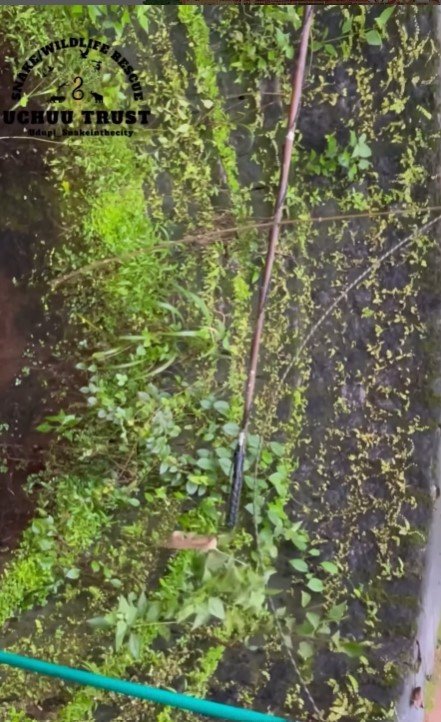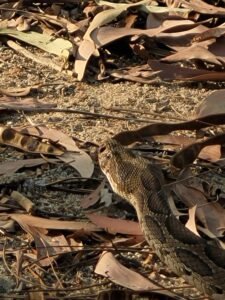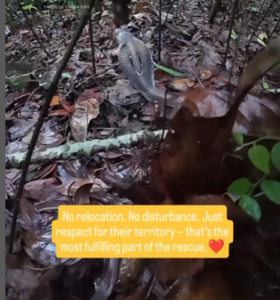Upon receiving a rescue call about a snake stuck in a well for four days, our team promptly responded to the situation. On arrival at the location, we identified the snake as a Russell’s viper, a venomous species known for its aggressive nature and potent bite.
Given the circumstances, we carefully evaluated three potential methods to rescue the snake:
1. **Using a Snake Hook:** We considered using a snake hook to gently lift the viper out of the well. This method required precision and control to avoid injuring the snake or provoking it into a defensive strike.
2. **Lowering a Bucket:** Another option was to lower a bucket into the well, hoping the snake would climb into it. This approach relied on the snake’s cooperation and could take more time, but it minimized direct contact and potential risk to the rescuers.
3. **Getting Down into the Well:** As a last resort, one of us could get down into the well to manually handle the snake. This was the most dangerous method due to the confined space and the close proximity to the viper.
We initially decided to try using the snake hook. With great care, we slowly lowered the hook into the well, trying to get it under the snake’s body. To our relief, the viper responded to the hook and latched onto it. This allowed us to gradually lift the snake out of the well.
Once the viper was safely out, we immediately checked it for any injuries. Finding none, we proceeded to safely bag the snake using a secure snake bag. This ensured that the viper could be transported without posing any danger to us or itself.
We then relocated the viper to a nearby safe location, far from human habitation, and released it back into its natural habitat. This careful and methodical approach ensured the safety of both the rescuers and the snake, successfully concluding the rescue operation. Thanks @shet_akshay@vrinda_l and Team @cwm_mahe











